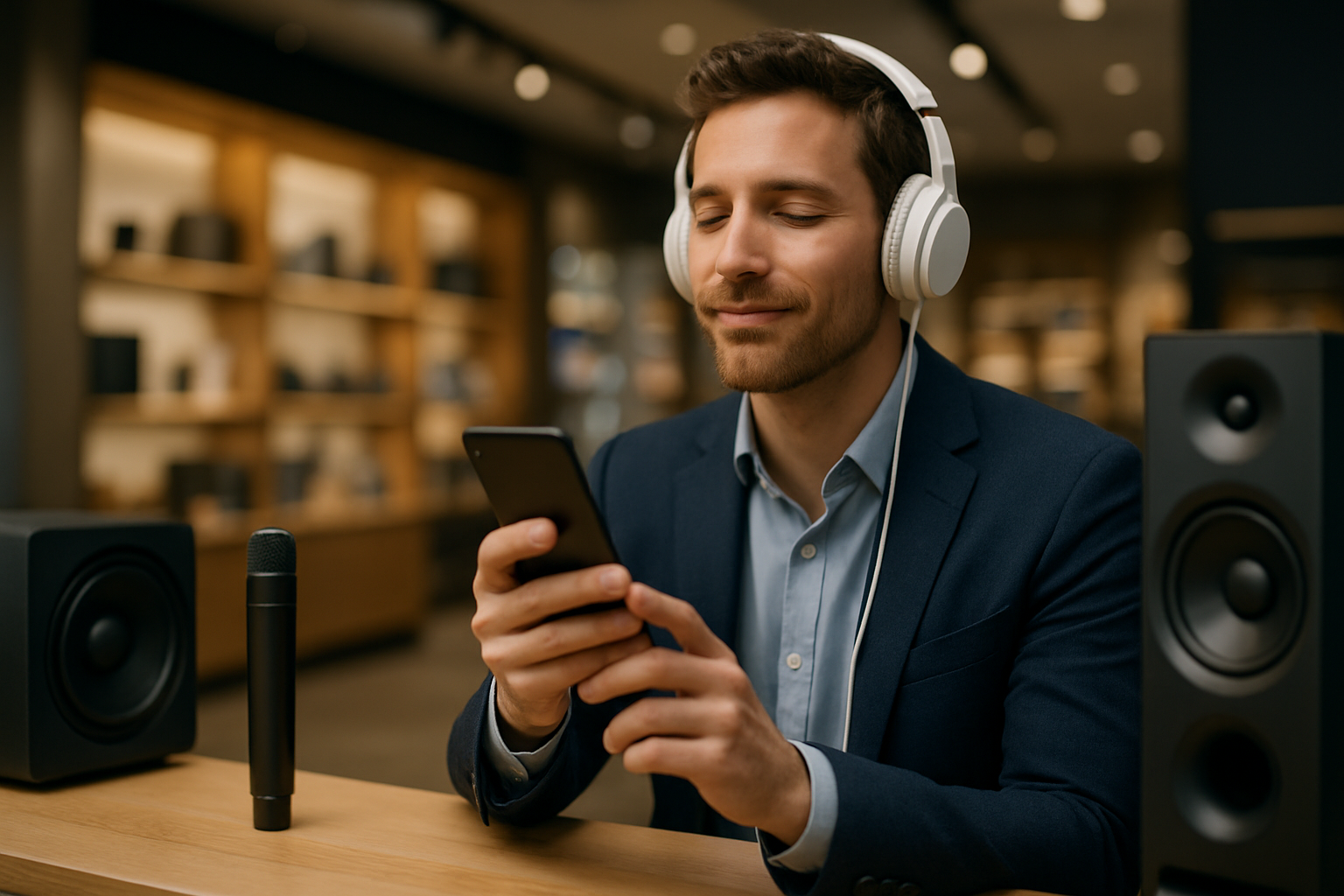Sonic Branding: The Auditory Identity of Modern Businesses
In a world saturated with visual stimuli, companies are turning to an often overlooked sense to capture consumer attention: sound. Sonic branding, the strategic use of music and sound elements to represent a brand, is revolutionizing how businesses connect with their audiences. From distinctive jingles to custom-made soundscapes, this auditory approach is reshaping brand identity in the digital age. Read below to explore the fascinating world of sonic branding and its impact on consumer behavior and brand perception.

The Psychology of Sound in Branding
Sound has a profound impact on human emotions and memory. Studies have shown that auditory cues can evoke strong emotional responses and create lasting impressions. In the context of branding, strategically designed sounds can trigger specific associations and feelings, helping to build a stronger connection between consumers and brands. The right sonic elements can convey brand values, evoke nostalgia, or create a sense of trust and familiarity.
The Evolution of Sonic Branding
While jingles and musical themes have been part of advertising for decades, the concept of sonic branding has expanded significantly in recent years. Modern sonic branding goes beyond catchy tunes to encompass a holistic auditory identity. This can include everything from the hold music on a customer service line to the notification sounds in a mobile app. The rise of voice-activated devices and smart speakers has further emphasized the importance of sonic branding, as these platforms rely heavily on audio cues for user interaction.
Crafting a Sonic Identity
Creating an effective sonic brand requires careful consideration and expertise. Brand strategists and sound designers collaborate to develop audio elements that align with a company’s visual identity, values, and target audience. This process often involves creating a sonic logo - a short, distinctive sound that serves as an auditory representation of the brand. Additionally, companies may develop a broader sonic palette, including specific instruments, rhythms, or tonal qualities that are consistently used across various brand touchpoints.
The Impact on Consumer Behavior
Research has shown that effective sonic branding can significantly influence consumer behavior. A well-crafted sonic identity can increase brand recognition, enhance emotional connections, and even influence purchasing decisions. In retail environments, carefully selected background music can affect shopping behavior, influencing everything from the pace at which customers move through a store to their perception of product quality and value.
Challenges and Considerations
While sonic branding offers numerous benefits, it also presents challenges. Creating a sonic identity that is both distinctive and versatile enough to work across various platforms and contexts requires significant expertise and investment. Moreover, cultural differences in musical preferences and sound associations must be considered for global brands. There’s also the risk of sonic fatigue - if a sound becomes too ubiquitous or intrusive, it may begin to annoy consumers rather than engage them.
The Future of Sonic Branding
As technology continues to evolve, so too will the opportunities for sonic branding. The increasing prevalence of voice-activated devices, augmented reality experiences, and interactive advertising will likely lead to even more innovative uses of sound in branding. We may see the development of more personalized sonic experiences, where brands adapt their audio elements based on individual user preferences or contexts. Additionally, advancements in neuroscience and audio technology may allow for even more precise targeting of emotional responses through sound.
In conclusion, sonic branding represents a powerful tool for businesses seeking to create deeper, more memorable connections with their audiences. By tapping into the emotive and mnemonic power of sound, companies can craft multisensory brand experiences that resonate in an increasingly noisy marketplace. As consumers navigate an ever-more complex digital landscape, the strategic use of sound may well become a key differentiator for successful brands. The future of branding is not just about what we see - it’s also about what we hear.





